A stethoscope is a diagnostic representative device used by doctors and professional nurses to listen to the patient’s interior noises, Pulse, and nausea. For example, different types of stethoscopes are made by different brands, with varying effectiveness, just like any other surgical device.
Moreover, a stethoscope is essential because of its outcomes. Most of the patients easily diagnosed with a perfect stethoscope. Similarly, several patients are not diagnosed appropriately if a doctor is carrying an unprofessional stethoscope.
Table of Content
Types of Stethoscopes

An excellent stethoscope allows the professional to perform their fundamental tasks, like auscultation, with the primary objective of checking the abdominal and thoracic organs and blood vessels.
The parts of a stethoscope may include ear tips, ear tubes, tubing, headset, diaphragm, bell, stem, and chest-piece.
Now, you might be confused or wondering whether there is a difference between stethoscopes or not.
The answer is yes!
Although, mostly stethoscope even looks the same as the other model or brand when they viewed physically.
A good stethoscope provides you a chance to perform one of the most important and basic task accusations. This is one basic piece of equipment that doctors need all the time. The humble stethoscope is modified into multiple forms for particular types of patients or for particular tasks.
The types of stethoscopes are organized by patient group and size of the chest piece, and even electronic and amplifying stethoscopes. Let us discuss some of them.
1- Cardiology Stethoscope
A cardiology stethoscope is something identical to a standard stethoscope. Still, the exception is that the cardiology variant offers you better audio clarity, sounding more distinctly with the capacity to distinguish high and low tones.
The main feature of the cardiology stethoscope that makes it different from a regular stethoscope is the difference in their chest piece and thicker tubing.
The thickness of tubing enables the blockage of all ambient sounds coming from surrounding and reduces the interference between the chest and earpiece.
2-Infant Stethoscope
The infant stethoscope works just like the pediatric stethoscope. Still, it is not entirely similar to a pediatric stethoscope because it is mainly for smaller patients(infants).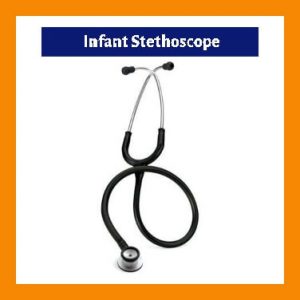
It has a chest piece diameter in between the pediatric and neonatal stethoscope, it is somewhat between 2.7 cm.
It also includes a non-chill rim and non-latex design to prevent allergic reactions while diagnosing the small patients. Besides, the small size of the chest piece enables us to get error-free auscultation results for infants.
3-Neonatal Stethoscope
A neonatal stethoscope is the smallest and usually used for newborn babies. It has the smallest diameter of approximately 2 cm and makes very detailed auscultation without ambient noise disturbance. These also have a non-latex coating to deter allergic side effects and a non-chill ring.
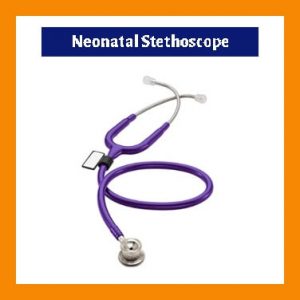
Although you can also use a regular stethoscope for small patients, but it is hazardous because it can cause the newborns to shock and get hurt.
Neonatologist uses this stethoscope for newborns because of its small-sized chest piece that makes the diagnosis error-free without harming them.
4-Veterinary Stethoscope
A veterinary stethoscope is used to cure small and large animals. Usually, vets use a stethoscope that a doctor uses, but they shouldn’t have to use it because animals have different tasks, challenges, and needs that aren’t applied to humans in the same manner.

These stethoscopes have long tubing of about 32 inches. This feature makes the diagnosis easy and comfortable for animals, either smaller or bigger.
This stethoscope is specifically designed so that the acoustic cups can help to hear and diagnose diseases of the animal.
Another feature, the tunable diaphragm, allows you to adjust the switch to make its transition trouble-free between high and low sound frequency.
5-Fetal Stethoscope
A fetal stethoscope is also known as a fetoscope was created in the 19th century and was an ear horn. Pinard horn said it amplified the fetal heartbeat in one ear only. Fetoscope is the modern combination of stethoscope and Pinard horn. The only difference is of construction. In a fetal stethoscope, a special bell is placed against the mother’s tummy to transmit sound to the earpiece.
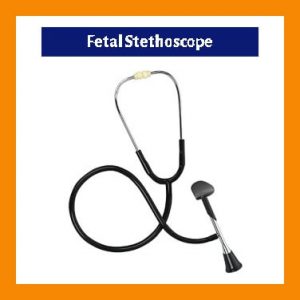
The forehead piece is another feature of a fetoscope that allows doctors and nurses to position the bell and transfer the sound. The sound of a heartbeat coming from a fetoscope is different from that of the fetal doppler, which uses amplification to listen to the baby’s heartbeat.
6-Pediatric Stethoscope
It appears like a standard stethoscope but is distinguishable from its colour and chest component scale. It has a small piece of the chest which allows for more precise placement.

Its colour variation comes with an additional bonus is that it appears like a toy, which can also be used to test an infant who may be afraid.
7-Electronic Stethoscope
Electronic stethoscopes aim to overcome hearing issues by mechanically amplifying the sound produced from the chest component and then translating it into electric waves, which are then distributed into different circuits and then analyzed for improved listening.
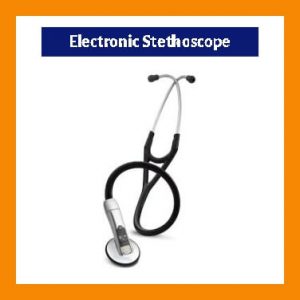
As compared to other regular acoustic, it offers a high range of sound frequencies due to this feature; medical professionals can hear much better than regular acoustic stethoscopes.
It is helpful in that, in the case of weak noises, it may intensify the heart or respiratory sounds while encouraging rapid diagnosis. Often, they use filters to pick different pulmonary or cardiac tones.
Electronic stethoscopes categorized into two types: Amplifying and Digitizing
Amplifying:
Amplified stethoscopes are the best option for hearing loss because they can louden the sound coming from the body. These stethoscopes used to convert auscultation of acoustic sound into electronic waves that are then amplify and transfer to the earpieces.
Different tasks like the reduction of ambient noise interference have done because of its electronic sound.
It enables you to wear headphones to listen to sound very well without any interference of earpieces.
It also introduces another feature, which is an electronic display for readings and for switching between the bell and diaphragm for low and high range of sounds.
Digitizing:
Also known as a digital stethoscope offers a chance to switch between amplification both digital and analog. This feature of switching enables to detect different kinds of diagnostic sounds.
Many people grant you to examine and record visually, and few can convert such recordings wirelessly to other smart devices.
Everyone wants to get those devices or tools which are easy to use and long-lasting, these stethoscopes offer rechargeable batteries to make your this need fulfil.
8-Teaching Stethoscope
This type of stethoscope features highly durable single-lumen tubing. It even comes with a sturdy piece of stainless chest and even has a dual headset.
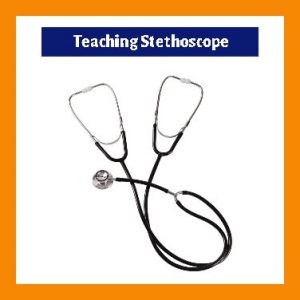
This feature allows for the simultaneous use of the stethoscope by both teacher and student. They are often used for educational purposes.
